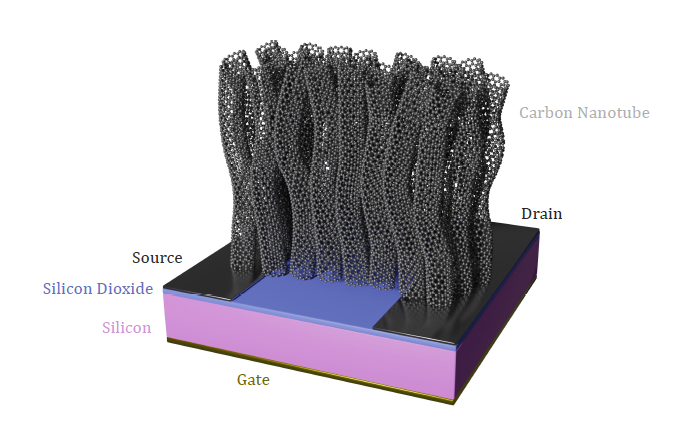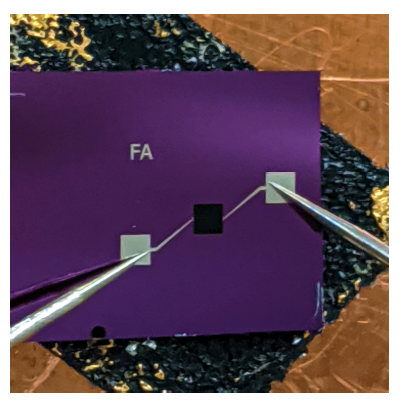This low-power electronic device is capable of detecting ionizing radiation in real time with a high degree of responsiveness. With a carbon nanotube (CNT)-based design, Georgia Tech’s device harnesses the inherent sensitivity of CNTs while demonstrating a highly scalable detection area and ability to discern X-ray pulses of varying dose—all in a modular design that resists radiation damage and operates with lower power requirements than other devices. The detector can even be manufactured in such a way as to promote self-healing of CNT defects associated with neutron interactions.
Georgia Tech’s detector leverages vertically aligned CNTs to overcome many performance problems of previous CNT-based radiation detection methods that rely on horizontal CNTs. In addition to the enhanced performance, this design enables highly controllable and repeatable results, consistent operating conditions, and increased energy efficiency. Unlike prior attempts at CNT-based radiation detection, Georgia Tech’s technology is ideal for several types of dosimetry applications as well as thermal nuclear reactor instrumentation, in which it provides multi-modal capabilities for measuring in-core and out-of-core flux.
- Sensitive: Detects the charge generated from the interactions of ionizing radiation within matter with a high level of precision and discerns X-ray pulses of varying dose
- Scalable: Covers a significantly larger detection area than other methods, ranging from 60,000 square micrometers to one square millimeter
- Responsive: Responds within microseconds and proportionately with the overall radiation dose when exposed to X-rays of varying tube voltage (energy) and tube current (number of particles)
- Low-power: Requires significantly streamlined electrical equipment for power compared with other devices
- Modular: Enables use of materials that demonstrate superior physical properties, such as higher atomic mass or higher dielectric strengths
- Multi-modal: Runs in different modes based on neutron flux for reactor instrumentation applications (pulse mode if the flux is low enough; current mode if the flux is too high)
- Robust: Resists radiation damage and does not suffer from the effects of permanently induced charge traps—a drawback of competing detectors that cause them to need periodic replacement
- Self-healing: Utilizes heat-resistant material or isolates the CNTs in an inert gas to potentially heal CNT defects associated with neutron interactions in reactor applications
Georgia Tech’s device is ideally suited for use as an ionizing radiation detector, especially for:
- Medical radiation dosimetry
- Space application dosimetry
- Thermal nuclear reactor instrumentation
CNTs have applications in numerous fields due to their robust physical and electronic properties, but their use in radiation detection has historically been limited. The inherent sensitivity of CNTs to their electric environment make them excellent sensors to the charge generated from the interactions of ionizing radiation within matter, but the detection efficiency of bulk CNTs has been restricted due to their low interaction probability. Georgia Tech’s innovation addresses the historic shortcomings of other CNT-based detection devices, such as single carbon nanotube field effect transistor detectors and dosimeters.
Georgia Tech’s detector was fabricated by growing vertically aligned CNTs directly onto intrinsic bottom contacts patterned on a SiO2/Si substrate. A global bottom gate contact is placed on the opposite side of the substrate and used to control the conductance of the CNT channel. When exposed to ionizing radiation such as X-rays, the drain current responds immediately to the charge induced in the SiO2/Si substrate. In rigorous device testing, the CNT-based detector has been shown to be sensitive to both X-ray energy and fluence and therefore, is sensitive to the overall absorbed dose. The innovation underscores the promise of integrating nanomaterials into traditional detection mediums with a device that is sensitive, scalable, and responsive.

An illustration of Georgia Tech’s vertically aligned CNT-based ionizing radiation detector.

A fully fabricated detector with probing needles contacting electrode pads.
